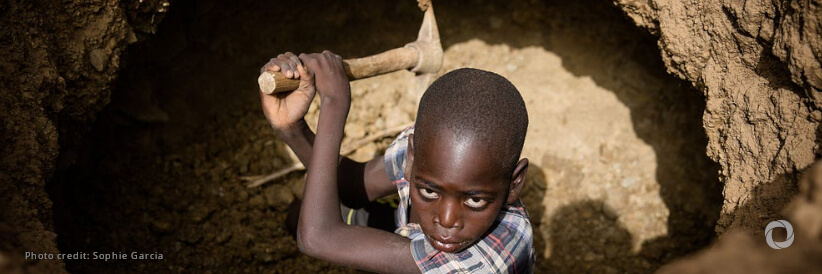The world must intensify efforts to eradicate child labour in all its forms, the UN urged at its “Childhood with Dignity” meeting . While progress has been made in tackling the issue – there are 86 million fewer children in child labour than there were in 2000, when records began – countries have fallen short of their collective commitment to end the practice completely by 2025.
Participants at the informal interactive dialogue expressed a strong resolve to confront the ongoing crisis, including the forced recruitment of children in armed conflict.
UN General Assembly President Philemon Yang, who opened the event, explained: “Sustainable Development Goal 8.7 calls for the eradication of child labour in all its forms by 2025. We must act with renewed urgency to ensure that all children can live the life of dignity and opportunity they deserve. We must address the root causes of child labour. We must also see greater enactment of fair wage laws. Greater enforcement of child protection laws. Greater investment in children, particularly those living in remote areas where child labour is widespread.”
Addressing the event, ILO Director-General Gilbert F. Houngbo said: “let us remember: the effective abolition of child labour is a fundamental principle and right at work. Fundamental principles and right at work are more essential than ever in the shifting world order where inequality, conflict, and uncertainty threaten the foundations of decent work.”
The discussion spotlighted two critical ILO conventions: the Minimum Age Convention, 1973 and the Worst Forms of Child Labour Convention, 1999. The latter, which includes slavery, forced labour, and trafficking, among others, has been universally ratified. Although legal frameworks are in place, significant gaps in implementation remain, meaning the plan to end child labour by this year has failed.
“It is clear that we will not meet the SDG target by 2025. This is of great concern and calls on all of us to accelerate action. We cannot build inclusive societies or shared prosperity if millions of children are denied their rights. Let us ensure that no child is deprived of a childhood and an education,” added the ILO Director-General.
Key takeaways from the dialogue included:
- Emphasis on the full implementation of ILO Minimum Age and Worst Forms of Child Labour Conventions.
- Ensuring robust data and evidence by improving measurement and statistics, building policy-relevant knowledge and understanding of policy impact.
- A strong consensus on integrating child labour concerns more deeply into national education, social protection, and wider employment policies.
- Decent work for parents is a prerequisite to tackling poverty, which is a driver of child labour.
- Renewed calls for universal access to free, quality basic education and early childhood development programs.
- Eliminating child labour and promoting decent work in supply chains.
- Preventing the recruitment and use of children in armed conflict, one of the worst forms of child labour.
- Partnerships and collective action to help raise global awareness, coordinate action at all levels, foster the exchange of innovative practices, monitor progress and mobilise resources to end child labour and forced labour.
Some 160 million children – 63 million girls and 97 million boys – were engaged in child labour at the beginning of 2020, according to the most recent figures from the ILO and UNICEF. Of these, 79 million were involved in hazardous work that jeopardises their health, safety, and moral development. The ILO and UNICEF are expected to release the 2025 Global Estimates of Child Labour report on 11 June.

